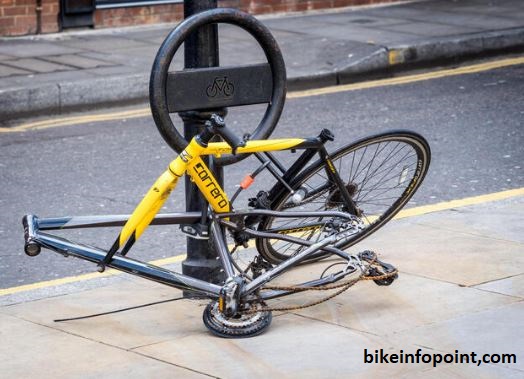
how to attach an umbrella to a bike
Why attach an umbrella to a bike:
Weather Protection: One of the primary reasons for attaching an umbrella to a bike is to shield yourself from the elements. Whether it’s raining, snowing, or the sun is scorching, an umbrella can provide effective protection, keeping you dry and reducing exposure to harsh weather conditions.
Commuting Convenience: If you use your bike for commuting, attaching an umbrella can make your journey more comfortable and practical. You won’t arrive at your destination drenched from rain or sweaty from the sun, which can be especially appealing for daily bike commuters.
Extend Your Biking Season: Having an umbrella attached to your bike can extend your biking season by allowing you to ride in light rain or drizzle without getting soaked. This means you can enjoy cycling even in less-than-ideal weather conditions.
Increased Versatility: An umbrella on your bike can also enhance the versatility of your ride. You can run errands, go shopping, or attend events without worrying about the weather forecast, as you have instant protection on your bike.
B. Benefits of attaching an umbrella to a bike:
Cost-Effective Solution: Attaching an umbrella to your bike is a cost-effective alternative to other weather protection gear, such as raincoats or cycling-specific umbrellas. It saves you money while providing similar benefits.
Easy Installation: Attaching an umbrella to a bike is a relatively simple DIY project. It doesn’t require advanced technical skills or expensive modifications to your bike, making it accessible to a wide range of cyclists.
Environmentally Friendly: Riding your bike with an umbrella can be seen as a more environmentally friendly option compared to using a car, as it reduces your carbon footprint and reliance on fossil fuels.
Customization: You can choose an umbrella that matches your style or preferences, adding a personal touch to your bike. Some cyclists even use branded or themed umbrellas to express their personality or promote a cause.
C. Safety considerations:
Visibility: While the umbrella offers protection, it’s essential to consider how it may affect your visibility as well as how visible you are to others. Ensure that attaching an umbrella doesn’t obstruct your view of the road or traffic, and use bright or reflective materials to increase your visibility to others.
Wind Resistance: Wind can be a significant factor when using an umbrella on a bike. Choose an umbrella designed to handle wind gusts, and be prepared to adjust its angle or fold it if the wind becomes too strong to prevent potential accidents.
Balance and Control: Maintaining proper balance and control of your bike is crucial. Be cautious when using the umbrella, as it can affect your stability, especially in windy conditions. Practice riding with the umbrella attached in a safe environment to get used to the changes in weight and balance.
Bike Fit: Ensure that the umbrella doesn’t interfere with your ability to operate the bike safely. Make sure it doesn’t touch the wheels or obstruct your hands on the handlebars.
Overall, attaching an umbrella to a bike can provide numerous benefits, but it’s essential to do so with safety and practicality in mind to fully enjoy the advantages while minimizing potential risks.

Table of Contents
ToggleHow to Ride a Bike with an Umbrella in the Rain
Gather Necessary Materials
A. Umbrella:
When choosing an umbrella to attach to your bike, consider the following factors:
Size and Coverage: Select an umbrella with a size that provides adequate coverage to shield you from the rain or sun. While you want sufficient coverage, it should not be so large that it becomes unwieldy or affects your balance.
Lightweight and Compact Design: Opt for a lightweight and compact umbrella that won’t add too much weight to your bike. Foldable or collapsible umbrellas are usually a good choice as they are easy to store and transport.
UV Protection (if desired): If you plan to use the umbrella to protect yourself from the sun, look for umbrellas with UV protection features. This can help shield you from harmful UV rays and keep you cool.
Wind Resistance: Wind can be a challenge when riding with an umbrella. Choose an umbrella with good wind resistance to prevent it from flipping inside out during strong gusts.
B. Bike:
Before attaching an umbrella to your bike, ensure that your bike is in good working condition. Check for the following:
Cleanliness: Make sure your bike is clean, as dirt and debris can affect the functionality of the components.
Maintenance: Ensure that your bike is well-maintained, with properly functioning brakes, tires, and gears. A well maintained bike is safer and more reliable.
Attachment Points: Identify suitable attachment points on your bike where you can securely mount the umbrella. Common attachment points include the handlebars, rear rack, or frame.
C. Mounting Hardware (e.g., clamps, zip ties, bungee cords):
The choice of mounting hardware is crucial for securely attaching the umbrella to your bike. Consider the following:
Clamps or Brackets: Clamps or brackets can be used to attach the umbrella to the handlebars. Choose sturdy and adjustable clamps that can securely hold the umbrella without damaging it or affecting your ability to steer.
Bungee Cords: Bungee cords are flexible and can be used to attach the umbrella to a rear rack or frame. Ensure that the bungee cords are of appropriate length and tension to keep the umbrella stable.
Zip Ties: Zip ties are another option for securing the umbrella to the bike frame. They are easy to use and come in various lengths and strengths. Make sure to choose zip ties that are appropriate for the job.
D. Tools (e.g., screwdriver, wrench):
Depending on the type of mounting hardware you choose, you may need specific tools. Here’s why these tools are important:
Screwdriver: A screwdriver may be necessary to tighten screws or bolts on clamps or brackets securely. It ensures that the umbrella remains stable during your ride.
Wrench: A wrench can be useful for tightening nuts or bolts on mounting hardware, especially if you’re using bungee cords or other attachment methods that require secure fastening.
Overall, selecting the right umbrella, ensuring your bike is in good condition, and using appropriate mounting hardware and tools are essential steps in preparing to attach an umbrella to your bike successfully. These choices will determine the safety and functionality of your umbrella bike setup.
Choose the Right Umbrella
A. Size and Coverage:
Size: When choosing an umbrella for your bike, consider the size carefully. It should be large enough to provide adequate coverage to shield you from the rain or sun. However, it’s essential to strike a balance, as an excessively large umbrella can be unwieldy and affect your balance while riding. A typical diameter of 40 to 48 inches is often suitable for bike-mounted umbrellas.
Coverage: Ensure that the umbrella provides coverage not only for yourself but also for your bike’s handlebars and controls. This will help keep essential parts of your bike dry and functional during rain.
B. Lightweight and Compact Design:
Weight: Choose an umbrella that is lightweight to minimize the additional load on your bike. Heavy umbrellas can affect your bike’s balance and maneuverability, making your ride less safe and comfortable.
Compactness: A foldable or collapsible umbrella is a great choice for a bike-mounted umbrella. These designs are easy to store, transport, and deploy when needed. Look for an umbrella that can be folded down to a size that fits on your bike without being obtrusive.
C. UV Protection (if desired):
If you plan to use the umbrella to protect yourself from the sun while riding, look for umbrellas with UV protection features. These umbrellas are designed to block harmful UV rays, keeping you cooler and protected from sunburn. UV protection can be particularly important if you frequently ride in sunny and hot conditions.
D. Wind Resistance:
Wind resistance is a critical factor to consider, especially if you plan to ride with the umbrella in windy conditions. Look for umbrellas that are designed to handle wind gusts without flipping inside out. Some umbrellas have reinforced frames and vented canopies, which make them more stable in the wind.
It’s also a good idea to practice riding with the umbrella in different wind conditions to get a feel for how it handles. Be prepared to adjust the angle of the umbrella or fold it if the wind becomes too strong to maintain safe and stable riding.
Prepare Your Bike
A. Ensure your bike is clean and in good working condition:
Cleaning: Start by giving your bike a thorough cleaning. Remove any dirt, grime, and debris that may have accumulated on the frame, wheels, and components. A clean bike not only looks better but also functions more efficiently.
Maintenance: Inspect your bike’s essential components, including the brakes, gears, tires, and chain. Ensure they are in good working condition. If you notice any issues or wear, address them before attaching the umbrella to the bike. Proper maintenance ensures your bike is safe and reliable.
B. Identify suitable attachment points on the bike:
Handlebars: The handlebars are a common attachment point for bike-mounted umbrellas. Look for available space on the handlebars that won’t interfere with your ability to steer and operate the bike’s controls. If you choose this location, ensure that the handlebars are free of clutter, like bike lights or accessories, which may obstruct umbrella placement.
Rear Rack: If your bike has a rear rack, it can be another suitable attachment point. You can use bungee cords, zip ties, or other mounting hardware to secure the umbrella to the rack. Ensure that the umbrella doesn’t impede your ability to access panniers or other items on the rack.
Frame Attachments: Some riders may choose to attach the umbrella directly to the bike frame. In this case, identify appropriate locations where you can secure the mounting hardware without interfering with the bike’s operation. Make sure the frame is clean and free of obstructions.
Stability: Regardless of the attachment point you choose, it’s essential to consider the stability of the umbrella. Make sure that the attachment is secure and doesn’t wobble or shift during your ride. Test the stability by gently shaking the umbrella after it’s attached to ensure it’s firmly in place.
Before attaching the umbrella, remember that safety is a priority. Ensure that the attachment points you choose do not compromise the bike’s stability, balance, or handling. Regular maintenance and a clean bike contribute to a safer and more enjoyable riding experience with a bike-mounted umbrella.
Mounting the Umbrella
A. Identify attachment points on the bike frame (handlebars, rear rack, etc.):
Handlebars: If you choose to attach the umbrella to the handlebars, make sure you have identified a suitable location that doesn’t obstruct your hands or interfere with the operation of the bike’s controls. The handlebars should remain free for steering and braking.
Rear Rack: When using the rear rack as an attachment point, ensure that the rack is in good condition and can support the added weight of the umbrella. Also, consider how the umbrella’s positioning might affect access to items on the rack.
B. Use appropriate mounting hardware to secure the umbrella to the bike:
Clamps or Brackets: If you’re attaching the umbrella to the handlebars, use clamps or brackets designed for this purpose. These should be sturdy and adjustable to hold the umbrella securely without damaging it or the handlebars.
Bungee Cords: When attaching the umbrella to a rear rack or frame, use bungee cords or straps. Ensure the bungee cords are of appropriate length and tension to keep the umbrella stable during the ride. Check the cords regularly to make sure they remain secure.
Zip Ties: If you opt for zip ties, choose ones that are strong and of the appropriate length for the attachment. Make sure they are tightened securely and won’t loosen during your ride.
C. Make sure the umbrella is securely attached and won’t interfere with your ability to ride the bike safely:
Stability: After attaching the umbrella, test its stability. Give it a gentle shake to ensure it’s firmly in place and won’t wobble or shift while you’re riding. If you notice any instability, adjust the attachment as needed.
Clearance: Verify that the umbrella doesn’t obstruct your view of the road or your access to the bike’s controls, such as brakes and gears. Your hands should be able to reach the handlebars without any interference.
Angle Adjustment: Ensure the umbrella is positioned at the desired angle to provide optimal coverage and protection from the elements. Practice adjusting the angle before your ride to become familiar with it.
Safety Precautions: Always prioritize safety. Be cautious when using the umbrella while riding, especially in windy conditions. Keep both hands on the handlebars, and use your judgment to fold or adjust the umbrella if it becomes unsafe.
Regularly check the attachment points and the stability of the umbrella to ensure that it remains securely fastened and doesn’t compromise your safety while riding. Make any necessary adjustments or maintenance to keep your bike-mounted umbrella setup safe and functional.
Adjusting the Umbrella
A. Ensure the umbrella is positioned at the desired angle:
Angle Adjustment: Adjust the angle of the umbrella to ensure it provides the optimal coverage and protection from the elements. It should shield you from rain or sun while allowing you to maintain a clear view of the road. Experiment with different angles to find the most comfortable and effective position.
Wind Considerations: Be aware of the wind direction and adjust the umbrella accordingly. Position it to minimize the impact of wind, which can affect your stability and control. In strong winds, it might be necessary to fold the umbrella to maintain safe riding conditions.
B. Test the opening and closing mechanism to make sure it’s easily accessible:
Smooth Operation: Verify that the opening and closing mechanism of the umbrella functions smoothly and is easy to access while riding. You should be able to deploy or stow the umbrella quickly and without straining yourself.
Practice: Before using the umbrella in real riding conditions, practice opening and closing it several times. This will help you become more proficient at adjusting it on the go.
C. Check for any wobbling or loose connections:
Stability: After adjusting the umbrella, give it a gentle shake to ensure it remains stable. Check for any wobbling or loose connections. If you detect any instability, address it immediately by tightening the attachment points or making necessary adjustments.
Regular Inspections: Periodically inspect the attachment hardware to ensure it remains tight and secure. Loose connections can compromise the stability and safety of the umbrella-bike setup.
Adjusting the umbrella is crucial to ensure that it provides effective protection while not impeding your ability to ride safely. Regular practice and inspections will help you become more skilled at fine-tuning the umbrella’s position and addressing any stability issues that may arise during your rides.
Safety Considerations
A. Always prioritize safety while riding with an umbrella:
Safety should be your top priority when using an umbrella on your bike. It’s essential to recognize that riding with an umbrella may introduce new safety challenges that you need to address.
Be aware of your surroundings and maintain a vigilant attitude while riding, as the umbrella may affect your visibility and awareness of traffic and road conditions.
B. Be mindful of wind conditions and adjust the angle of the umbrella accordingly:
Wind is a significant factor to consider when riding with an umbrella. Strong winds can affect your stability and control, potentially leading to accidents.
Continuously monitor wind conditions during your ride. If you feel the wind becoming strong or gusty, be prepared to adjust the angle of the umbrella or fold it to reduce wind resistance. Safety should always come before weather protection.
C. Keep both hands on the handlebars and be cautious when using the umbrella:
It’s crucial to maintain proper control of your bike at all times. While using the umbrella, keep both hands on the handlebars to ensure you can steer, brake, and signal as needed.
Use the umbrella with caution, especially in rainy or slippery conditions, as sudden maneuvers may be necessary. Make sure your grip on the handlebars is secure, and be prepared to release the umbrella if you need to react quickly to a situation.
D. Consider using a helmet and other protective gear:
Helmets are essential for your safety while riding a bike. When using an umbrella, wearing a helmet becomes even more important as it provides protection in case of a fall or collision.
In addition to a helmet, consider other protective gear such as gloves and eyewear to shield your hands and eyes from rain, debris, and UV rays. These items can enhance your comfort and safety during your ride.
In summary, safety is paramount when attaching an umbrella to your bike. Be vigilant, especially in windy conditions, and adjust the umbrella’s angle as needed. Keep both hands on the handlebars, use protective gear, and be prepared to fold the umbrella if it jeopardizes your safety. By following these safety considerations, you can enjoy the benefits of riding with an umbrella while minimizing potential risks.
Maintenance and Care
A. Regularly check the mounting hardware for tightness:
Frequent Inspections: Regularly inspect the mounting hardware to ensure it remains tight and secure. Vibrations during rides can cause screws, bolts, or other fasteners to loosen over time.
Tightening: If you notice any signs of loosening or instability, promptly tighten the hardware to maintain the stability of the umbrella attachment. Use the appropriate tools, such as a screwdriver or wrench, to secure any loose components.
B. Inspect the umbrella for wear and tear:
Visual Inspection: Examine the umbrella for any signs of wear and tear. Pay attention to the canopy, frame, and any moving parts of the umbrella.
Address Damage: If you identify any damage or areas of concern, address them promptly. Repair or replace damaged parts to ensure the umbrella continues to function effectively and safely.
Check Mechanisms: Specifically, check the opening and closing mechanisms for smooth operation. Ensure that there are no sticking points or malfunctions that could hinder the umbrella’s functionality.
C. Clean and store the umbrella properly when not in use:
Cleaning: After use, especially in adverse weather conditions, clean the umbrella to remove any dirt, mud, or debris. This prevents the accumulation of grime that could affect the umbrella’s performance over time.
Drying: If the umbrella gets wet during use, allow it to dry thoroughly before storing it. Avoid leaving a wet umbrella in a confined space, as this can lead to mold or mildew.
Storage: When not in use, store the umbrella in a cool, dry place. Consider using a protective cover or bag to prevent dust accumulation and to shield the umbrella from potential damage.
By incorporating these maintenance and care practices, you can extend the lifespan of the umbrella and ensure that it remains a reliable and safe addition to your bike. Regular checks, timely repairs, and proper storage contribute to a well-maintained bike-mounted umbrella setup.
In conclusion, attaching an umbrella to a bike can be a practical and inventive solution to enhance your riding experience, providing protection from the elements and extending the versatility of your bike.


